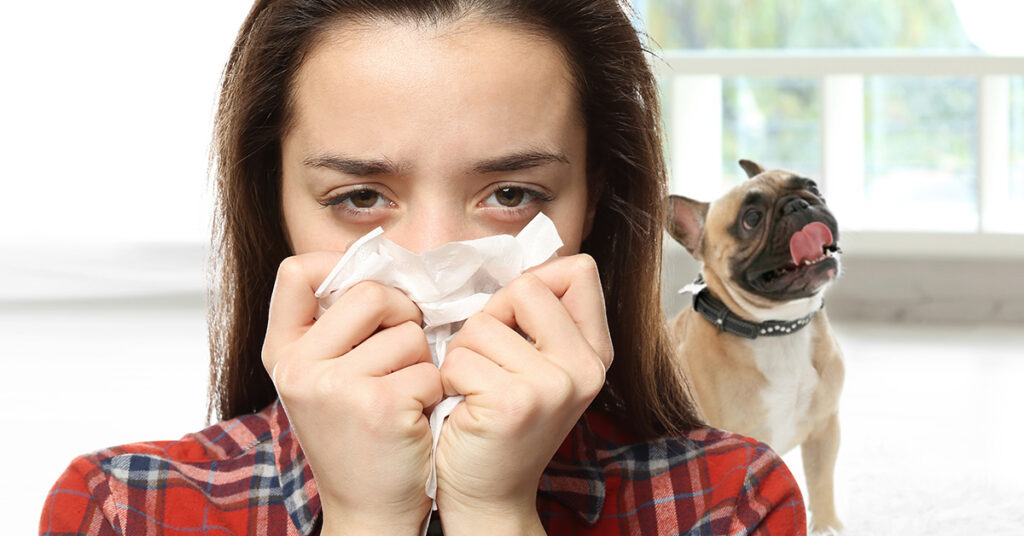
For many, pets are more than just animals; they’re family. But what happens when your furry friend triggers your allergies? The sneezing, itching, and discomfort can make it seem like choosing between your health and your pet. However, living with pets when you have allergies isn’t necessarily an either/or scenario. With the right strategies and adjustments, it’s possible to create a harmonious living environment for both you and your beloved pet.
Understanding Pet Allergies
Pet allergies are usually triggered by proteins found in an animal’s dander (dead skin flakes), saliva, and urine. Contrary to popular belief, it’s not the pet’s fur that’s the main issue but these proteins. When these allergens become airborne or stick to surfaces, they can trigger allergic reactions in sensitive individuals.
Choosing the Right Pet
Hypoallergenic Breeds
While no pet is 100% hypoallergenic, some breeds are known to produce fewer allergens than others. For dogs, consider breeds like Poodles, Bichon Frises, and Portuguese Water Dogs. For cats, the Siberian and Balinese are believed to produce fewer allergens. Researching and spending time with a breed before making a commitment can help gauge your allergic reactions.
Consider Other Pets
If traditional pets like cats and dogs trigger severe allergic reactions, you might consider other types of pets such as fish, reptiles, or amphibians, which don’t produce dander.
Creating an Allergy-Friendly Home
Establish Pet-Free Zones
Designate certain areas of your home, especially the bedroom, as pet-free zones to reduce your exposure to allergens. This can provide a safe space where your allergy symptoms can ease.
Regular Grooming
Regularly bathing and grooming your pet can significantly reduce the amount of allergen-laden dander they produce. Consider professional grooming services if doing it yourself triggers your allergies.
Clean House
Maintain a strict cleaning schedule. Use HEPA filters in your vacuum cleaner and air purifiers to capture airborne allergens. Wash pet bedding frequently and consider using allergen-resistant covers on furniture.
Flooring
Hardwood, tile, or linoleum floors trap fewer allergens than carpets. If you have carpets, vacuum them regularly with a HEPA filter vacuum and steam clean them periodically.
Personal Allergy Management
Allergy Treatments
Over-the-counter or prescription allergy medications can help manage your symptoms. Consult with an allergist for personalized advice, which may include immunotherapy (allergy shots) for long-term relief.
Wash Up
Wash your hands after handling your pet and avoid touching your face. Changing clothes after prolonged pet interactions can also minimize allergen exposure.
Build Tolerance
Some allergy sufferers find that their symptoms diminish over time as they build up a tolerance to their pet’s dander. However, this doesn’t happen for everyone and shouldn’t be relied upon as a guaranteed solution.
A Shared Responsibility
Living with pets when you have allergies requires a commitment not just from the allergy sufferer but from the entire household. Everyone should be involved in maintaining the cleaning regimen and adhering to pet-free zones to ensure a comfortable environment for all.
Consult an Allergist
Before making any decisions, consult with an allergist. They can provide specific advice tailored to your situation, including allergy testing to identify specific triggers and developing a management plan that might include immunotherapy.
Living with pets while managing allergies is challenging, but it’s often possible with the right strategies and a bit of compromise. It’s about creating a balance that allows you to enjoy the companionship of pets without compromising your health and well-being. With careful planning and ongoing management, you and your furry friends can live together in harmony.




